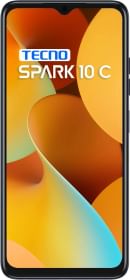Xiaomi and LeEco both have a lot in common between them. In China skirmishes often surface in public, and tomorrow, with the launch of Redmi Note 3, the two will go head to head for the first time in India.
The Le 1s (faq|review) is LeEco passing on a Chinese success to Indian fanbase at reasonable prices while the Redmi Note 3 has been tailor-made to regain the lost confidence of Xiaomi India fan-base, post a full dull, sluggish year. Let’s compare the two.
Comparison: Should you buy the Lenovo K4 Note or LeEco Le 1s? – Comparison, What Matters, What Doesn’t
Key Specifications and Features:
| Model | Xiaomi Redmi Note 3 | LeEco Le 1s |
| Display | 5.5-Inch, IPS Display, 1080p Full HD resolution | 5.5-Inch, IPS Display, 1080p Full HD resolution |
| Processor | Hexa-Core Qualcomm Snapdragon 650 | 2.2GHz 64-bit Helio X10 SoC |
| RAM | 2GB / 3GB | 3GB |
| Internal Storage | 16GB / 32GB | 32GB |
| Software | MIUI 7 based on Android Lollipop | EUI 5.5 based on Android Lollipop |
| Primary Camera | 16MP, dual-tone LED flash, 1080p Videos | 13MP, LED flash, 1080p Videos |
| Secondary Camera | 5MP primary | 5MP primary |
| Battery | 4050 (non-removable) | 3000 mAh (non-removable), fast charging |
| Others | 4G Dual SIM LTE | 4G Dual SIM LTE |
| Price | Rs. 9,999 / RS. 11,999 | Rs. 10,999 |
Note: We have tested the 3GB RAM variant, and that is valid for the entire comparison post that follows.
Display:
On paper, both Xiaomi Redmi Note 3 and LeEco’s Le 1s sports a similar 5.5-inch IPS display with full HD resolution and 403 ppi pixel density. Le 1s has additional Corning Gorilla Glass 3 protection as well. Le 1s appears to offer an edge to edge display, thanks to black strip surrounding the display and 80.3 percent screen-to-body ratio.
The display quality is, however better on Redmi Note 3 in our opinion. The color temperature, brightness and color tones appear more pleasing. The Le 1s display is sharp and crisp but has always struck as a shortcoming for the phone.
Also Read: Xiaomi Redmi Note 3 First Impression – Xiaomi’s Comeback In India?
Design:
Both these handsets are good looking smartphones but in comparison, Le 1s is slimmer and more comfortable to hold than Redmi Note 3. The LeEco’s phone is about 13 percent slimmer than Xiaomi’s Redmi Note 3 which has an (8.69mm vs 7.5mm). The few added millimeters enable Redmi Note 3 to house a beefier battery.

Both the phones have metal uni-body exterior. However, the Le 1s feels more premium among the two thanks to its CNC machined Aluminum body. Xiaomi has taken to a more conventional approach for its budget range Redmi Note 3 at least as far as design goes. Redmi Note 3 has a basic pressed out body which we have seen over the years and doesn’t score much on style quotient.
Le 1s and Redmi Note 3 both features capacitive keys with haptic feedback and backlight. Both phones include a rear-mounted fingerprint reader. Unlike Redmi Note 3, the Le 1s has a USB Type-C port, which is arguably more future proof, but not a clear-cut advantage till everything goes Type C.

Both phones feature a volume rocker and power keys on the right edge and Dual SIM tray on the left side. At the Top, users can find a 3.5mm jack and jack and infrared blaster in both devices.
All said and done, Le 1s looks and feels better in hands.
Compare: LeEco (Letv) Le 1s vs Xiaomi Redmi Note 3 vs Lenovo K4 Note vs Huawei Honor 5X
Performance:
Xiaomi Redmi Note 3 has a slight edge over Le 1s in this section. Xiaomi Redmi Note 3 is powered by Qualcomm’s latest Snapdragon 650 while Le 1s is enthralling on its 2.2 GHz octa-core MediaTek Helios X10 chipset. Redmi Note is perhaps the first budget phone to accommodate the services of Snapdragon 650. This recently launched hexa-core chipset has two Cortex-A72 and four ARM Cortex-A53. Cortex A72 is considered to be much more power efficient and will replace Cortex A57 cores in high-end SoCs this year.
Both the Redmi Note 3 and Le 1s are very snappy performers. Gaming experience and day to day usage on both smartphones has been very gratifying so far. So, the specs in this regard are just numbers. You couldn’t go wrong with performance on either of the two.
|
Benchmark Standard |
Le 1s Score | Redmi Note 3 Score |
| Antutu (64-bit) | 55,347 | 77713 |
| Nenamarks 2 | 57.2 | 60.1fps |
| Vellamo (Metal, Multicore) | 1338, 2273 | 1480, 3610 |
| Quadrant | 25300 |
28150 |
Camera:
In the optics section too Xiaomi Redmi Note 3 outclasses Le 1s. Remember in our Le 1s review, we pointed out that Le 1s has a good camera considering its price and we stick to that statement. However, Redmi Note 3 with its powerful 16-megapixel shooter has slightly notched up the camera standard in this budget segment. The primary camera module on Xiaomi Note 3 also equipped with f/2.0 aperture, phase detection autofocus and dual-LED (dual tone) flash.
Le 1s, on the other hand, features a 13-megapixel ISOCELL camera with a single LED flash, phase detection auto-focus, and f/2.0 aperture. Le 1s locks focus in just 0.09. On the front, both phones wear same selfie camera at least in terms of specification. Like Le 1s, Xiaomi Redmi Note 3 comes with a wide-angle 5-megapixel secondary camera with f/2.0 aperture
Both the phones are capable of shooting 1080p videos at 30 frames per seconds. However, Le 1s edges past Redmi Note 3 in videography with its ability to record 4K videos.
Camera Samples:
More Coming Soon!
OS And Fingerprint:
Both Le 1s and Redmi Note 3 runs on a heavily customized version of Android 5.1 Lollipop. All LeEco phones feature its EUI similarly Xiaomi devices come with its own MIUI. Both are missing an app drawer, both are rich in customization options and both are great with updates and bug fixes.
We have spent considerable time with EUI and MIUI in the past, and find the EUI a bit more intuitive, organized and user-friendly. Your opinion and taste might differ. The EUI is still new in India, so there are a few bugs, but it doesn’t feel like a halfhearted or half-baked product. There is one aspect in which Le 1s outshines Redmi Note 3 that is its content-driven Le Ecosystem.
LeEco is planning to go live with content services in India and has partnered with Eros Now and YuppTv for 1 year of free subscription movies, music and Live TV on the go. LeEco is scheduled to roll out these services in Q2 2016.
Buying Guide: Lenovo K4 Note or LeEco Le 1s? – Comparison, What Matters, What Doesn’t
Conclusion:
Both these phones are a powerful performer and it is difficult to choose between the two. The Xiaomi Redmi Note 3 scores in crucial areas with a better camera, display and battery backup while LeEco Le 1s has its edge in an interesting design, Audio and with respect to content options. However, keeping price sensitivity of Indian buyers in mind, Xiaomi has played a masterstroke by pricing Redmi Note 3 competitively which further tilts the bait in its power.
Le 1s Advantages:
- Build and Design
- Better Sound
- Great Software
Redmi Note 3 Advantages:
- Better battery backup
- Capable Camera
- Vivid display
- SD card
- Gyroscope and VR Support





































I have been using le 1 s and redmi note3(3gb) for a month now. And I can surely conclude that le1 s beats note 3 in every aspect other than camera and battery backup. Note 3 has many problems with WiFi and hotspot. When I use note 3 as host for mini militia its hotspot lags and the multiplayer game stops. There is also a problem with what’s app notification. Note 3 seems to be better than le1s from the reviews but after using them for sometime I can surely say that le1s is better than note 3 (3gb).